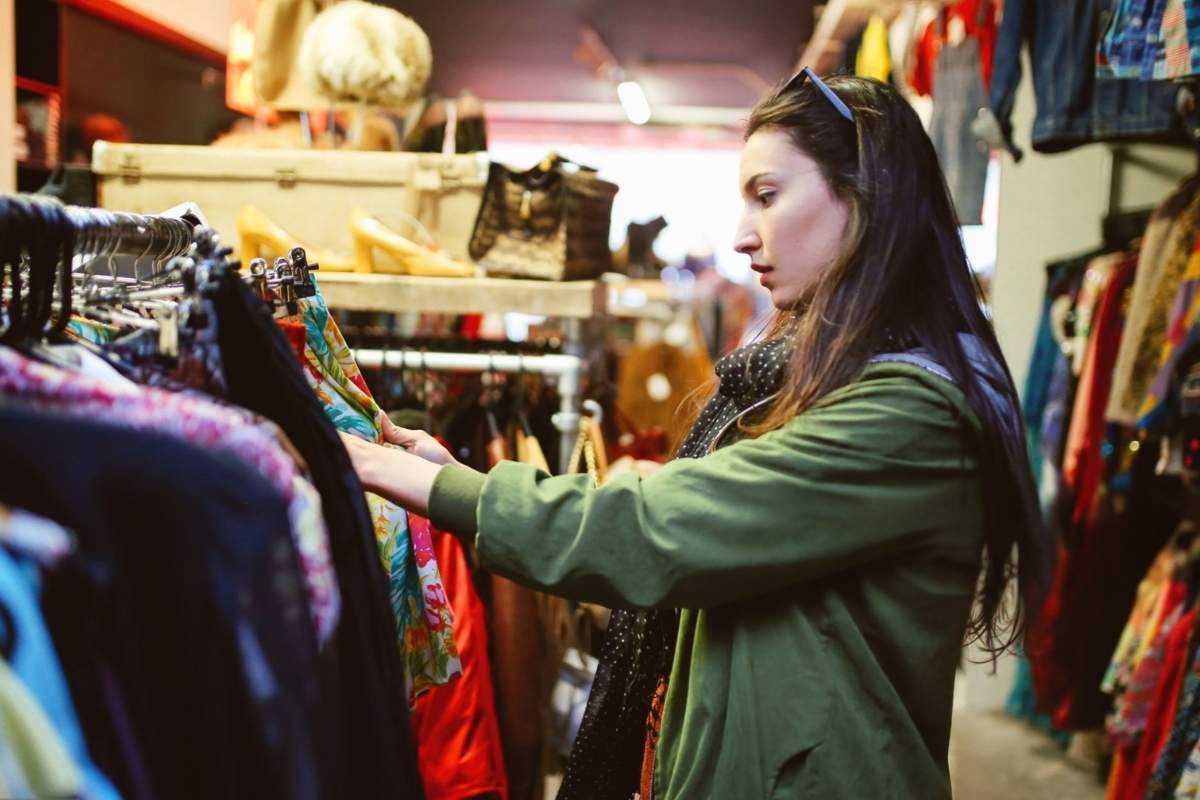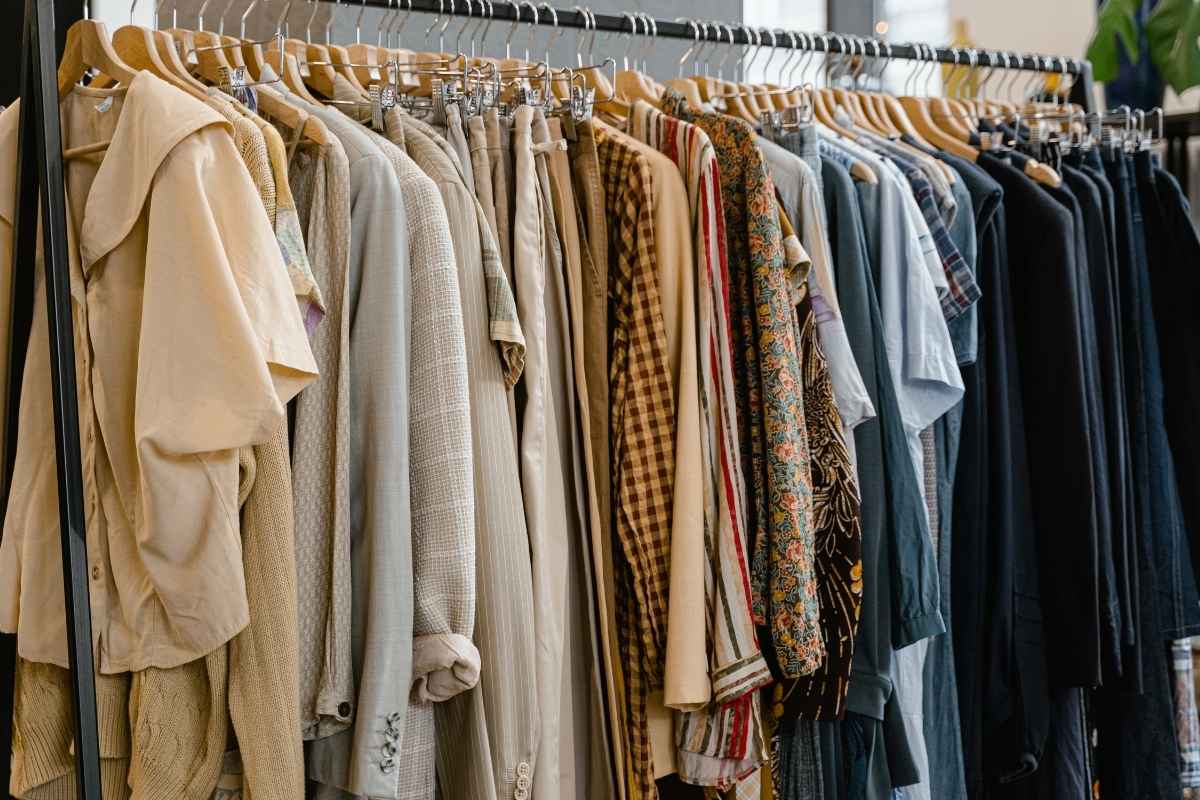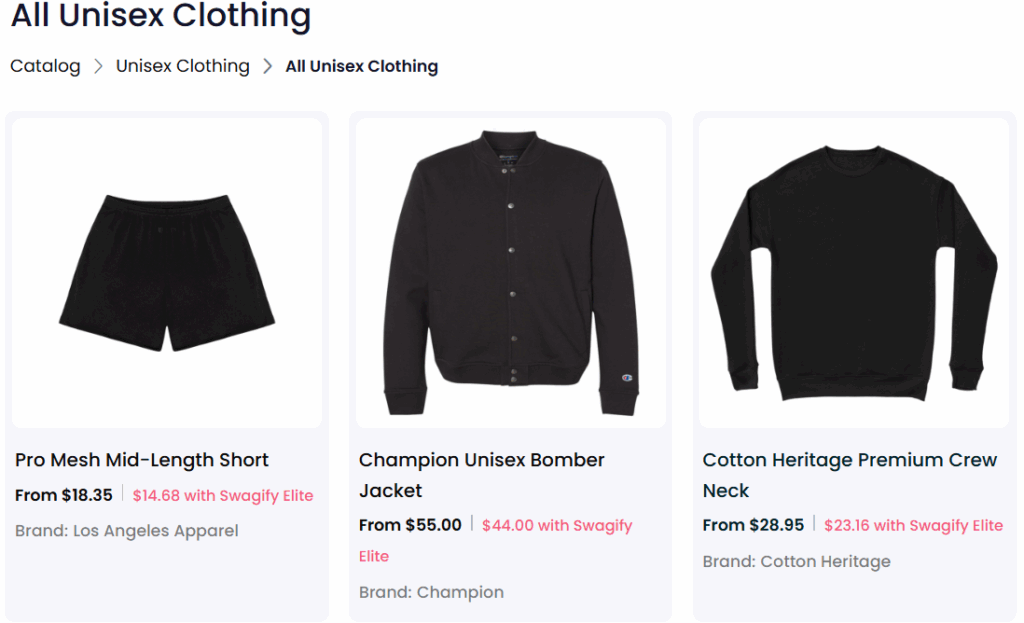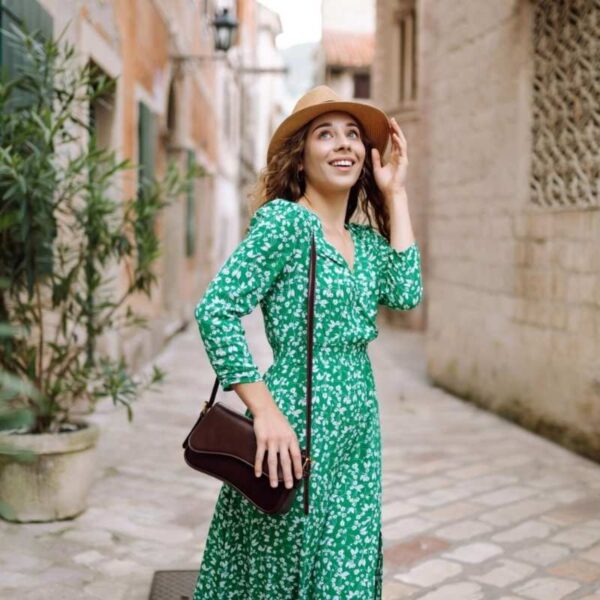Introduction
In 2025, sustainability is no longer just a buzzword—it’s a buying standard. With climate change intensifying, landfills overflowing with textile waste, and unethical labor practices under the spotlight, Americans are demanding more transparency and accountability from the fashion industry. From New York to California, consumers are ditching fast fashion in favor of ethical, eco-conscious clothing that reflects their values.
Sustainable fashion is about more than just organic cotton or bamboo fabrics. It’s a mindset. It’s about supporting brands that prioritize fair wages, reduce their carbon footprint, eliminate harmful chemicals, and give back to communities. It’s about choosing quality over quantity—and investing in timeless, versatile pieces that last.
Table of Contents
This 2025 guide was created to help you make informed, conscious choices. Whether you’re a minimalist, a trend-lover, or just beginning your sustainable style journey, this article breaks down what real sustainability means, which U.S.-based brands are leading the movement, and how you can shop with purpose without sacrificing style.
Let’s explore the future of fashion—one ethical purchase at a time.
What Makes a Fashion Brand Truly Sustainable?
Before you start shopping, it’s important to understand what separates genuinely sustainable brands from those just using the label as marketing. Here are the pillars of true sustainability:
1. Eco-Friendly Materials
Sustainable brands use materials that are grown and produced with minimal environmental impact. These include:
- Organic cotton (grown without harmful pesticides)
- Hemp (requires less water and no synthetic fertilizers)
- TENCEL™ and modal (sourced from responsibly harvested wood pulp)
- Recycled polyester (diverts plastic waste from landfills)
- Natural dyes or low-impact color processes
2. Ethical Production
A brand is not sustainable if its workers are underpaid or exploited. Look for brands that:
- Pay fair wages across all supply chain levels
- Offer safe and humane working conditions
- Commit to zero child labor and forced labor policies
- Work with certified ethical factories or cooperatives
3. Supply Chain Transparency
True sustainable fashion brands openly share:
- Where and how their garments are made
- The origin of materials used
- Audits and certifications from third-party verifiers
4. Circular Fashion Practices
Brands aiming for a closed-loop system are setting the new gold standard:
- Offering take-back or recycling programs
- Designing with recyclability in mind
- Using biodegradable fabrics or packaging
- Creating pieces built for longevity and repair
5. Community & Social Impact
The most inspiring brands extend their mission to uplift communities by:
- Partnering with artisans
- Supporting female-led cooperatives
- Donating profits to social and environmental causes
Key Certifications to Look For:
- GOTS (Global Organic Textile Standard)
- Fair Trade Certified
- OEKO-TEX Standard 100
- B Corporation
- Cradle to Cradle Certified
Top Sustainable Fashion Brands
Here are standout American brands that are making serious efforts to combine fashion with environmental and social responsibility:
Patagonia
A pioneer in environmental activism and fair labor, Patagonia uses 100% recycled polyester and organic cotton. Their repair and resale program (Worn Wear) sets the standard for circular fashion.
Reformation
Based in Los Angeles, Reformation blends high-fashion aesthetics with eco-conscious practices. Their facilities run on renewable energy, and their product pages detail carbon and water footprints.
Girlfriend Collective
Known for activewear made from recycled water bottles and fishing nets, this brand promotes body inclusivity, transparency, and eco-packaging.
Eileen Fisher
A leader in slow fashion, Eileen Fisher offers minimalist women’s wear crafted from organic and recycled fibers. Their “Renew” program takes back worn items and refurbishes them for resale.
Outerknown
Founded by pro surfer Kelly Slater, Outerknown offers casual, coastal-inspired clothing that’s fully Fair Trade Certified and focused on durability and environmental protection.
MATE the Label
This L.A.-based label produces organic, non-toxic basics that are cut, sewn, and dyed locally. MATE is climate-neutral certified and uses compostable packaging.
Sustainable Luxury Fashion in the U.S.
| Brand | Country | Key Sustainable Practices | Known For |
|---|---|---|---|
| Reformation | USA | Deadstock fabrics, eco-packaging, low-waste factories | Trendy dresses, chic basics |
| Mara Hoffman | USA | Organic and recycled materials, transparent sourcing | Bold prints, modern silhouettes |
| Amour Vert | USA | Low-impact dyes, eco-fabrics, limited production | Everyday sustainable fashion |
| Christy Dawn | USA | Deadstock and regenerative cotton farming | Vintage-inspired feminine dresses |
| Eileen Fisher | USA | Circular design, take-back program, fair labor | Timeless wardrobe staples |
| Behno | USA | Ethical production, fair wages, women’s empowerment | Luxury handbags and apparel |
| Gabriela Hearst | USA | Zero-waste goals, natural fibers, transparency | High-end runway pieces |
| Another Tomorrow | USA | Blockchain-backed traceability, ethical labor, eco fabrics | Sleek, modern luxury |
| Stella McCartney | UK (U.S. presence) | Vegetarian fashion, no fur/leather, sustainable fabrics | Sustainable high-fashion |
| Veja | France | Wild rubber soles, organic cotton, recycled plastic | Ethical sneakers |
| Patagonia | USA | Environmental activism, recycled materials, fair trade | Outdoor luxury apparel |
| Nanushka | Hungary | Eco-leather, small batch production, biodegradable packaging | Contemporary minimalist pieces |
| BITE Studios | UK/Sweden | Certified organic fabrics, timeless design | Editorial-style womenswear |
| Maison Cléo | France | Handmade, deadstock fabrics, made-to-order only | One-of-a-kind pieces |
Yes, you can be sustainable and luxurious. These American designers and brands are reshaping high fashion with eco-ethics:
Mara Hoffman
Committed to regenerative practices, Mara Hoffman uses hemp, TENCEL™, and plant-based dyes. Each collection is crafted with longevity and biodegradability in mind.
Christy Dawn
Known for their “farm-to-closet” approach, Christy Dawn partners with Indian farmers to regenerate soil and promote biodynamic farming. Their dresses are made with deadstock or regeneratively grown fabrics.
Amour Vert
Translating to “green love” in French, this San Francisco-based label is celebrated for its use of non-toxic dyes, sustainable fabrics, and zero-waste production methods.
2025 Sustainable Fashion Trends to Watch

1. Mushroom Leather & Other Vegan Alternatives
Cruelty-free leathers made from mushrooms, apples, and cactus are becoming mainstream in 2025.
2. Digital Product Passports
Brands are now using blockchain to provide full traceability—from farm to fashion rack.
3. Rental & Resale Boom
The rise of platforms focused on renting, thrifting, and reselling high-quality garments reflects growing consumer interest in circular wardrobes.
4. Solar-Powered Production
More brands are turning to renewable energy to reduce their carbon emissions at the manufacturing level.
5. Upcycling & Zero-Waste Collections
Repurposing materials and designing to eliminate fabric waste is becoming a new creative standard.
How to Shop Sustainable Fashion Brands
| Step | Details & Tips |
|---|---|
| Research Brands | Look for sustainability certifications, transparent sourcing, and ethical labor. |
| Check Material Labels | Choose organic cotton, Tencel, hemp, or recycled fabrics over synthetics. |
| Buy Less, Buy Better | Invest in high-quality, timeless pieces instead of fast fashion trends. |
| Support Local & Small Brands | Reduce carbon footprint and support ethical production by shopping locally. |
| Use Sustainable Marketplaces | Explore platforms like EarthHero, DoneGood, and ThredUp for vetted eco options. |
| Secondhand & Thrift | Extend product life by buying pre-loved clothing or accessories. |
| Avoid Greenwashing | Be cautious of vague claims—look for actual data, certifications, and proof. |
| Recycle or Donate | Keep clothes out of landfills by recycling or donating what you no longer wear. |
| Ask Questions | Don’t hesitate to reach out to brands about their environmental and social impact. |
Shopping sustainably in 2025 isn’t about completely overhauling your closet overnight. It’s about making smarter, more intentional decisions every time you shop. With more brands claiming to be “green,” “conscious,” or “ethical,” here’s how to separate truly sustainable shopping from trendy marketing.
1. Apply the 30-Wear Test
Ask yourself: Will I wear this at least 30 times?
If the answer is no, it’s likely not a sustainable buy. Focus on versatile pieces that can be styled multiple ways and worn across seasons. Quality staples beat trend-driven purchases every time.
2. Know Your Fabrics
Look for natural, organic, or recycled fabrics like:
- Organic cotton (GOTS-certified)
- Recycled polyester or nylon
- Hemp or bamboo (mechanically processed, not chemically)
- Linen (naturally eco-friendly)
Avoid petroleum-based synthetics like virgin polyester or fast-fashion blends unless clearly recycled.
3. Prioritize Transparency
Sustainable brands are proud to share details about:
- Their supply chain
- Factory conditions
- Material sourcing
- Environmental impact
If a brand doesn’t clearly state how and where its clothes are made, it’s time to move on.
4. Invest in Timeless Styles
Capsule wardrobes, neutral tones, and classic cuts never go out of fashion. Focus on pieces that match your lifestyle and can transition from work to weekends.
5. Shop Secondhand First
Before buying new, check:
- Thrift shops
- Resale apps like Poshmark, Depop, or TheRealReal
- Clothing swaps or consignment boutiques
You’ll often find high-quality, barely-worn pieces at a fraction of the cost—with zero added environmental impact.
6. Support Local and Small-Scale Brands
Buying from U.S.-based artisans or small ethical brands not only supports local economies but also reduces the emissions associated with international shipping.
7. Learn to Care and Repair
Sustainable shopping also means keeping clothes in use longer:
- Read care labels and wash with cold water
- Use a drying rack instead of a dryer
- Repair minor tears, replace buttons, re-sole shoes
- Store properly—fold knits, hang structured pieces
Watch Out for Greenwashing

Not all “sustainable” labels are created equal. In 2025, greenwashing is more sophisticated—making it harder to spot. Here’s how to protect yourself from misleading claims:
1. Beware of Buzzwords with No Substance
Words like eco-friendly, natural, green, or earth-conscious sound good—but mean nothing without evidence. Real sustainable brands back their claims with transparency, certifications, and data.
2. Look at the Whole Brand—Not Just One Collection
A brand that releases a single “green capsule” while continuing mass production with little regard for ethics or waste is likely using sustainability as a PR move. Look at the company-wide practices, not just one product line.
3. Is the Brand Avoiding Supply Chain Transparency?
If a brand isn’t willing to tell you where their clothes are made, who makes them, or what materials are used, they’re probably hiding unethical practices.
4. Watch Out for Carbon Offset Distractions
Some brands use carbon offsets to appear climate-conscious while doing little to reduce emissions in their manufacturing. Offsets should be the last step, not the only one.
5. Evaluate Price Points
Sustainable clothing often costs more because it accounts for fair wages and quality materials. If a brand claims to be ethical but sells $5 T-shirts, it’s worth questioning the true cost behind that price.





Sign up